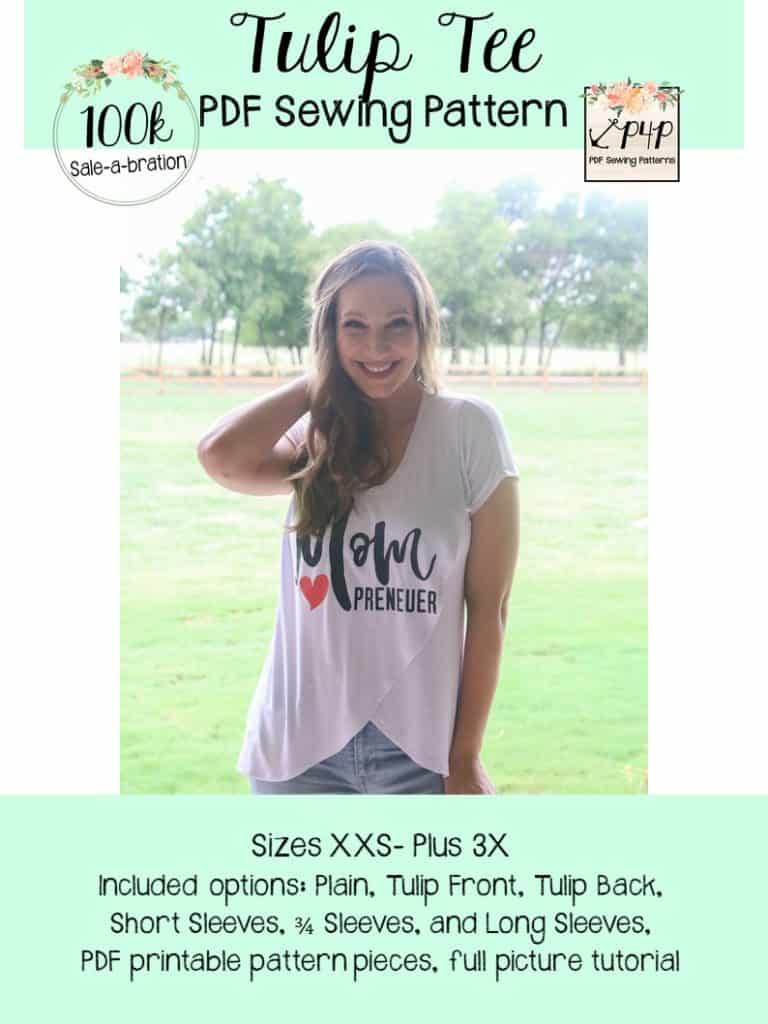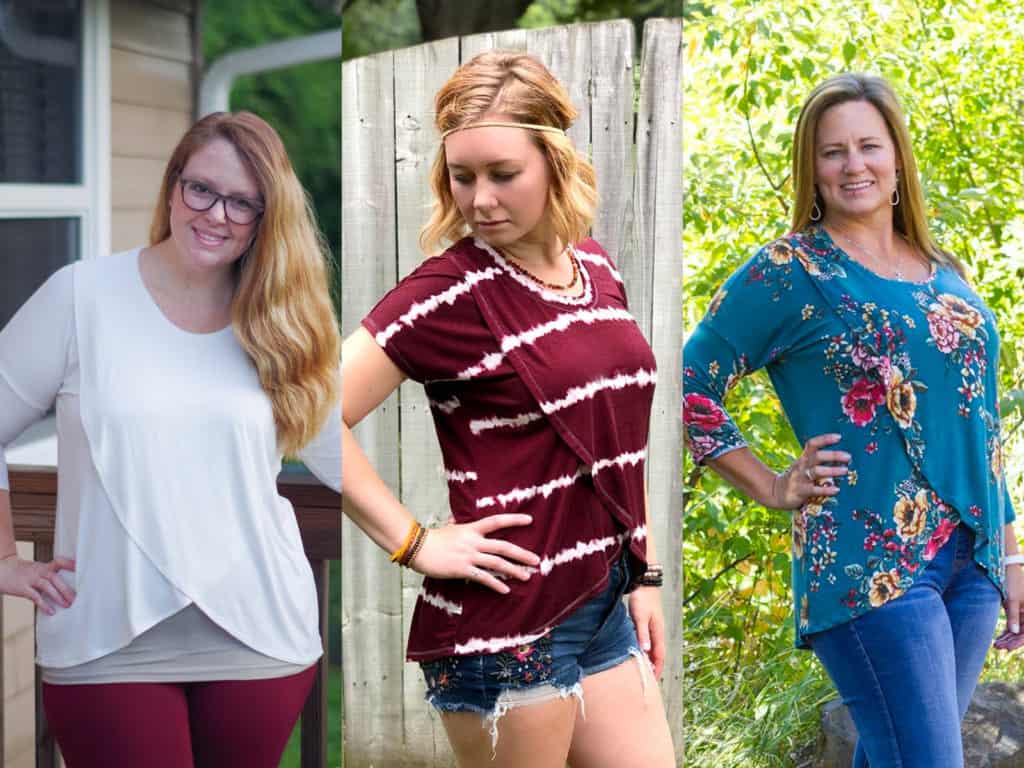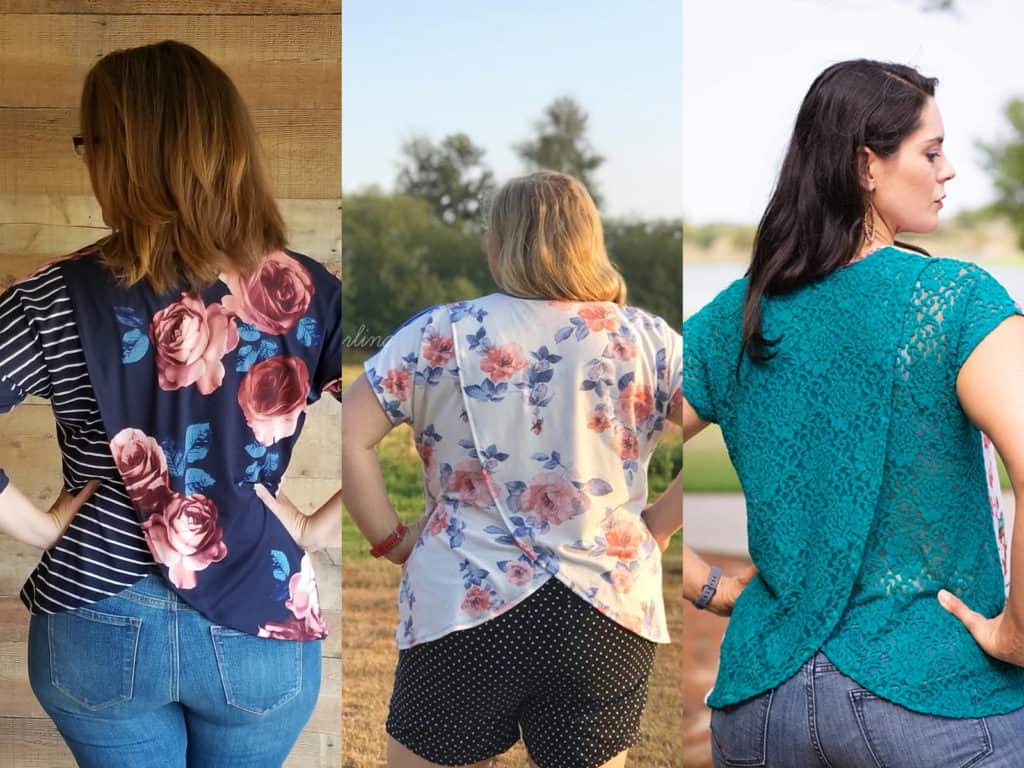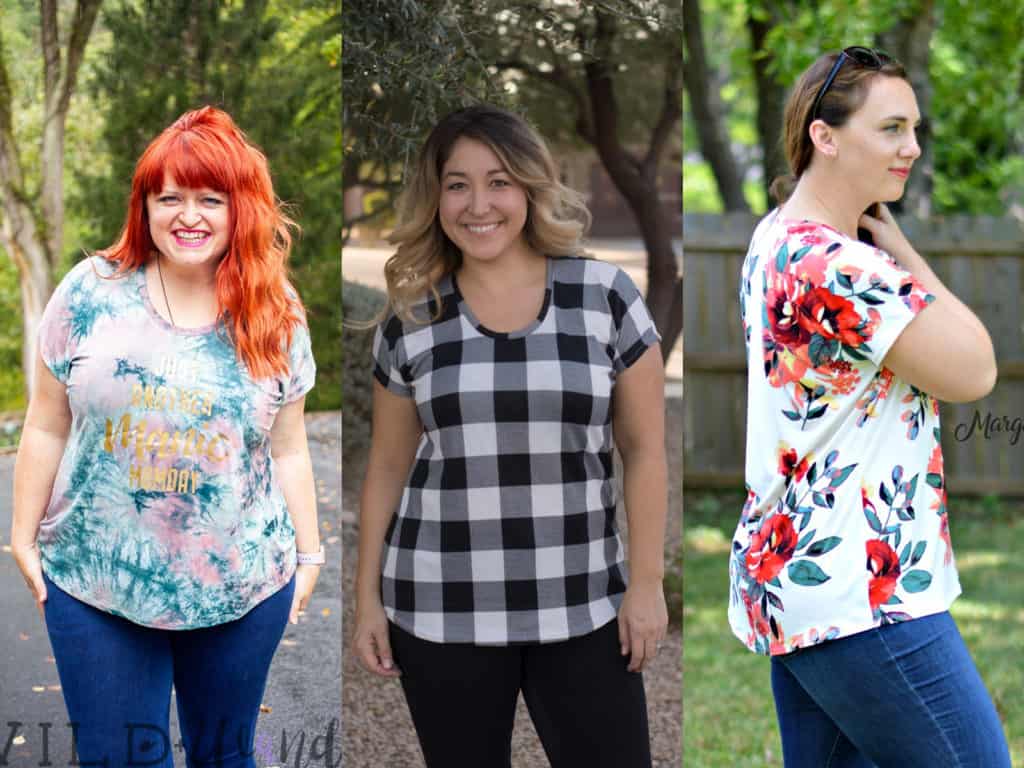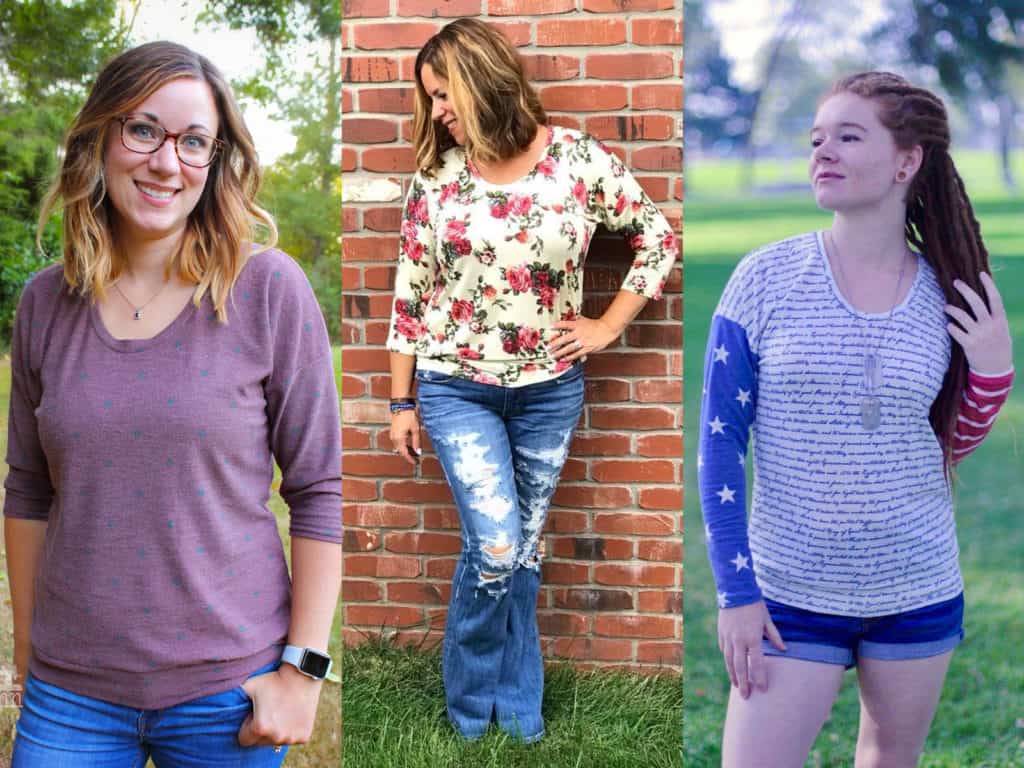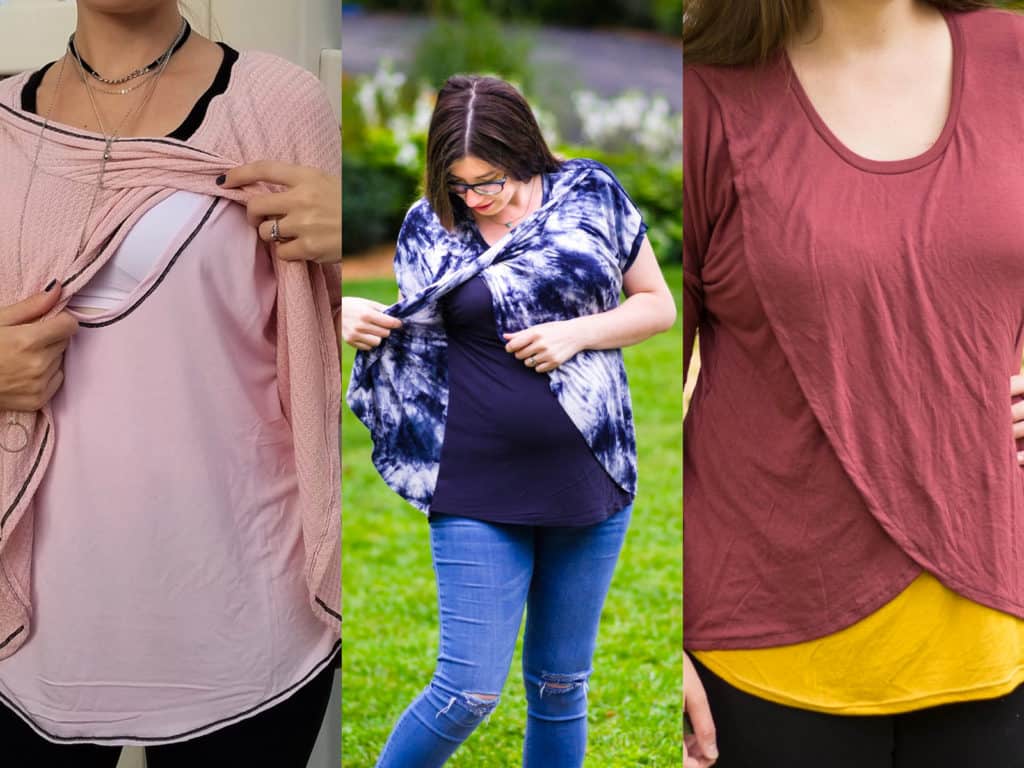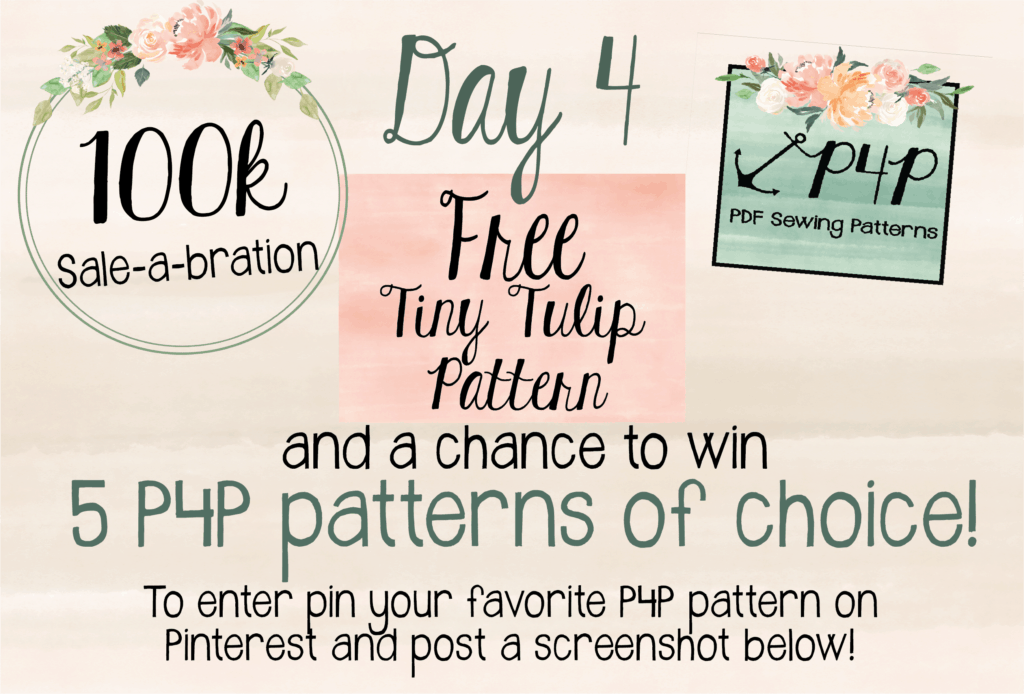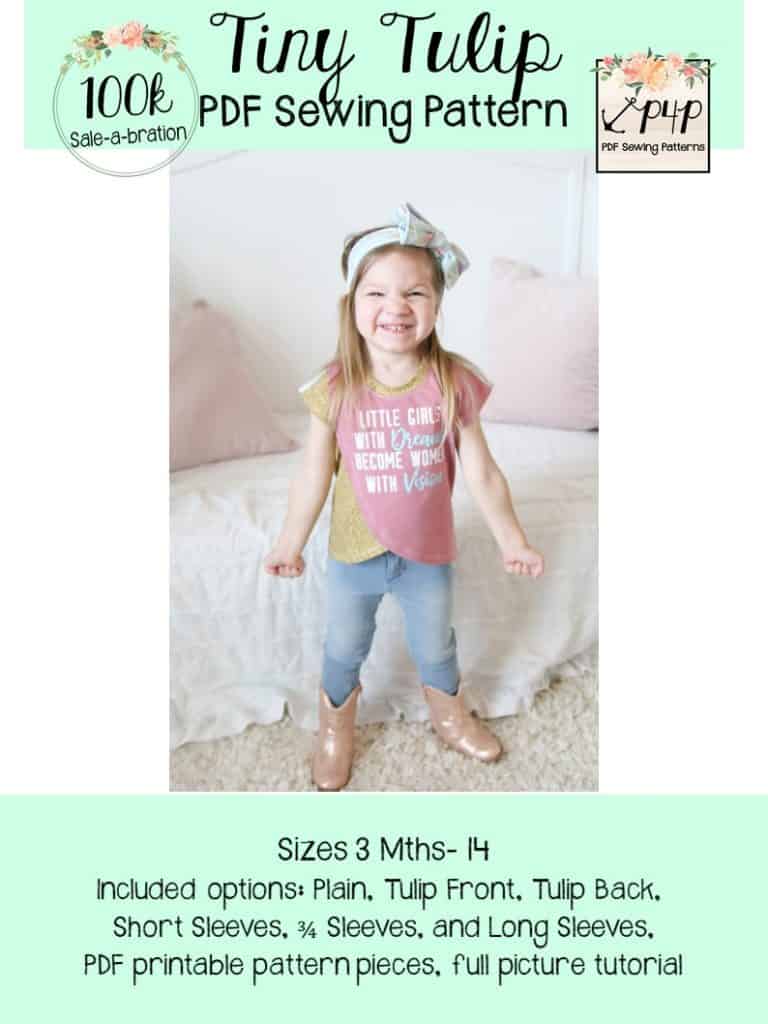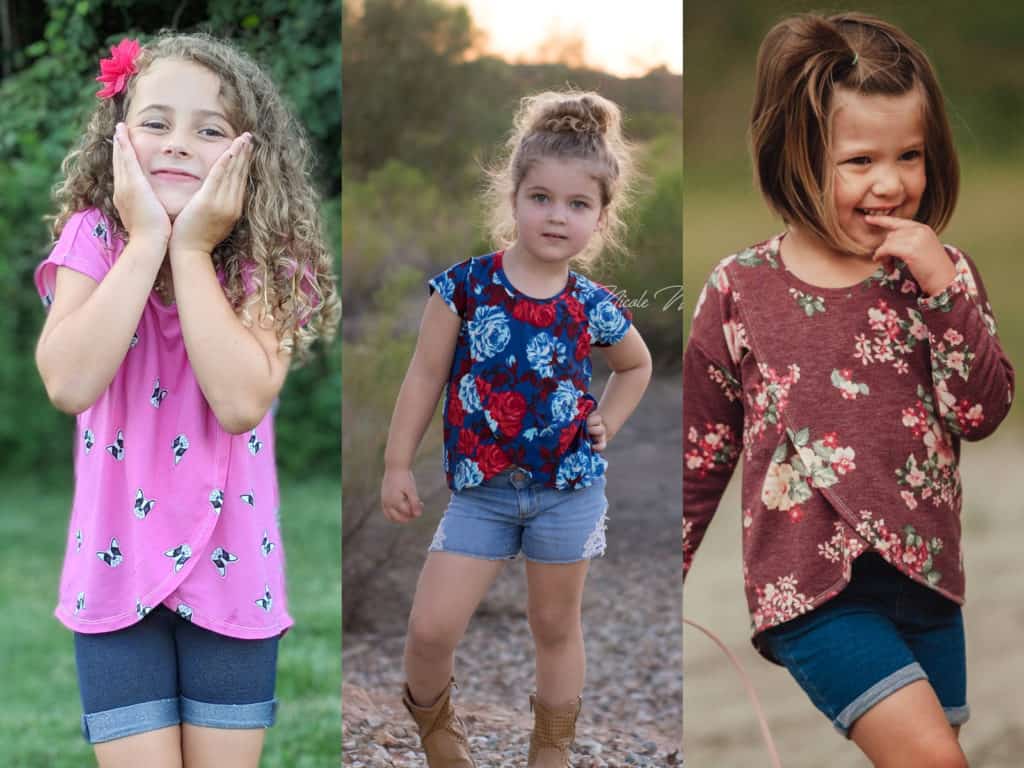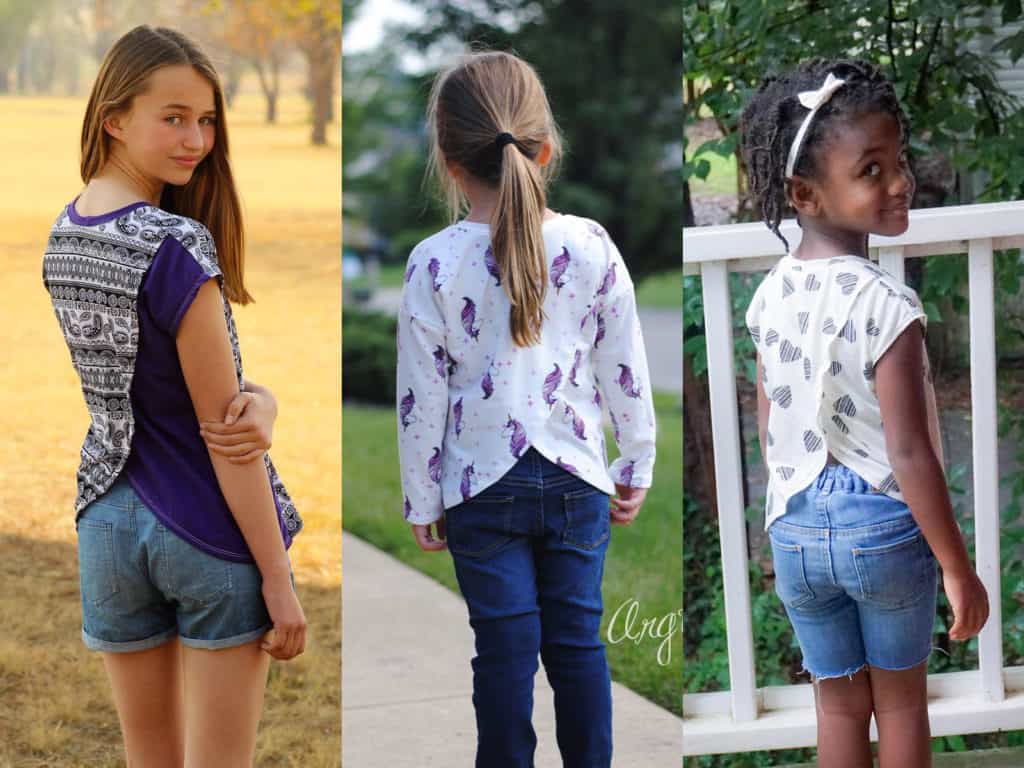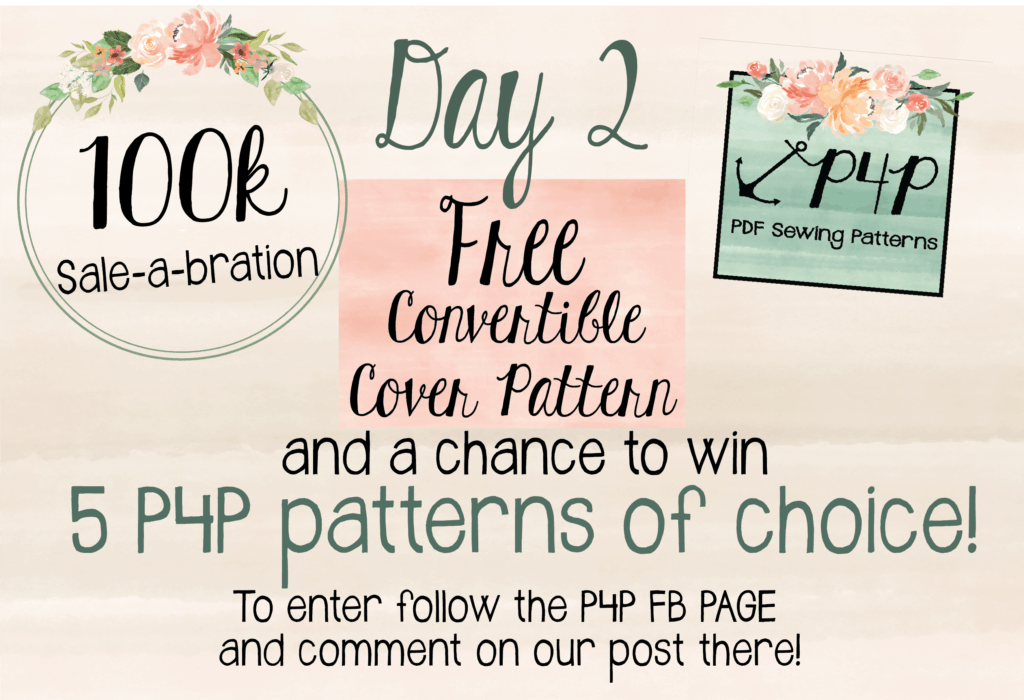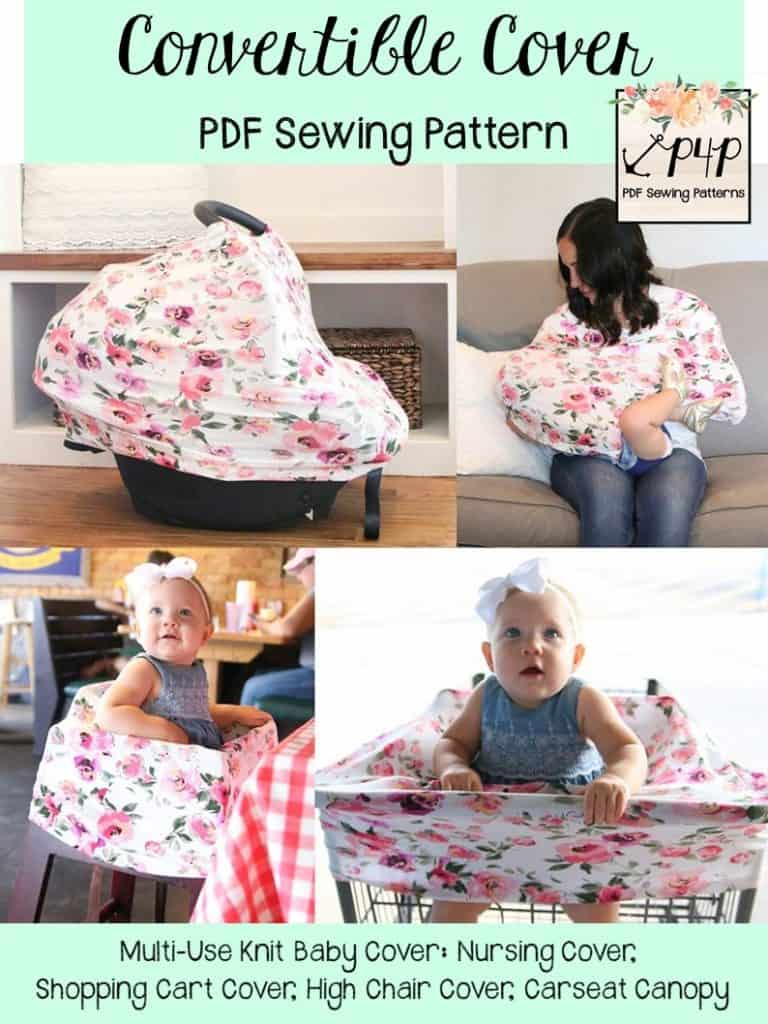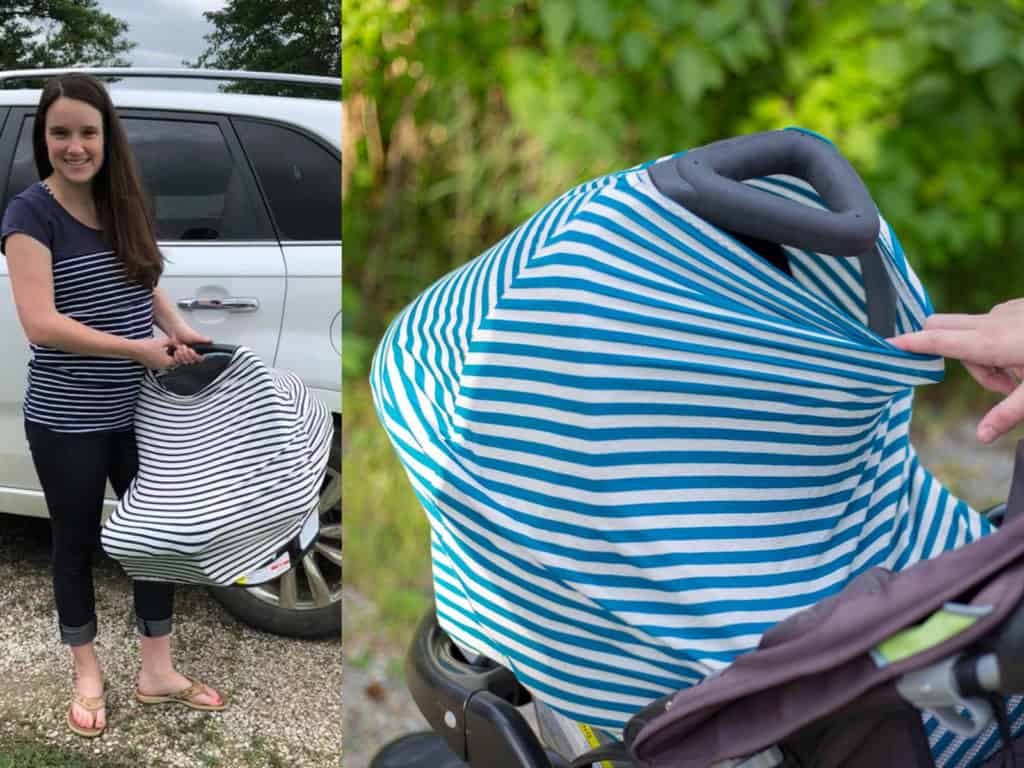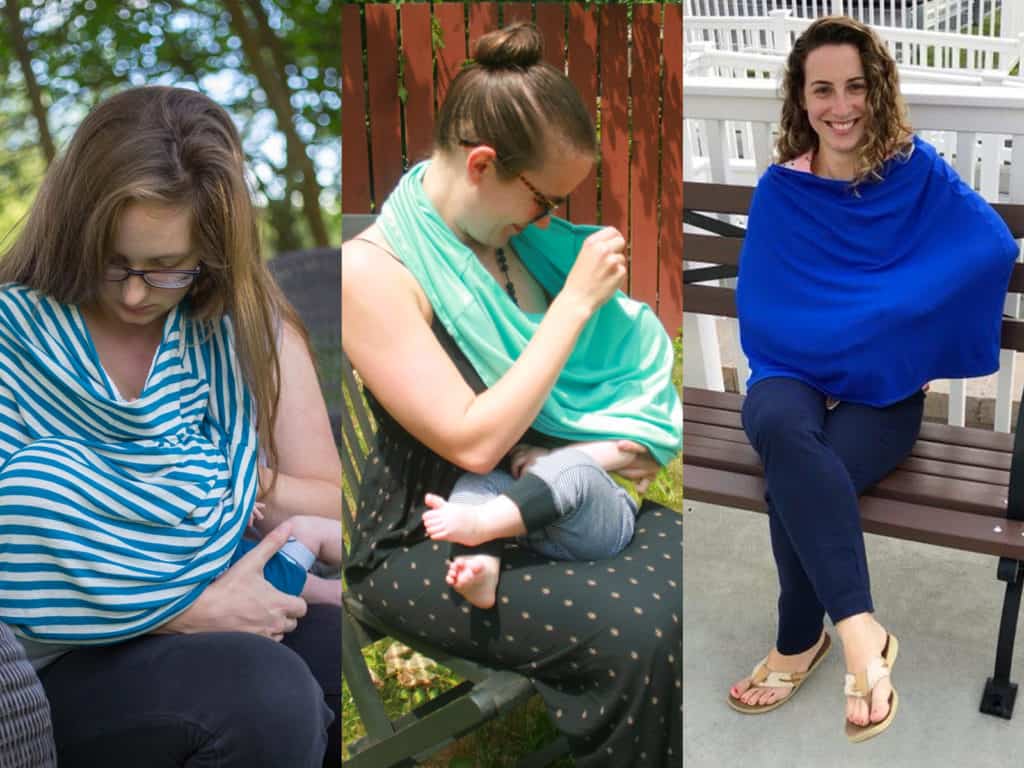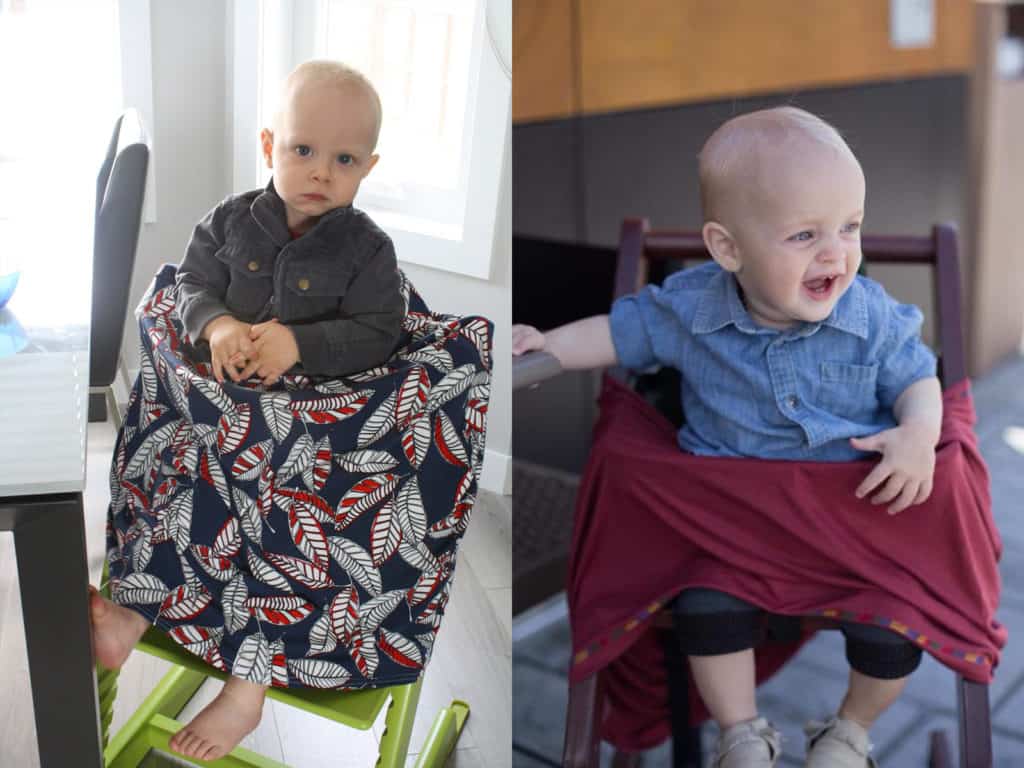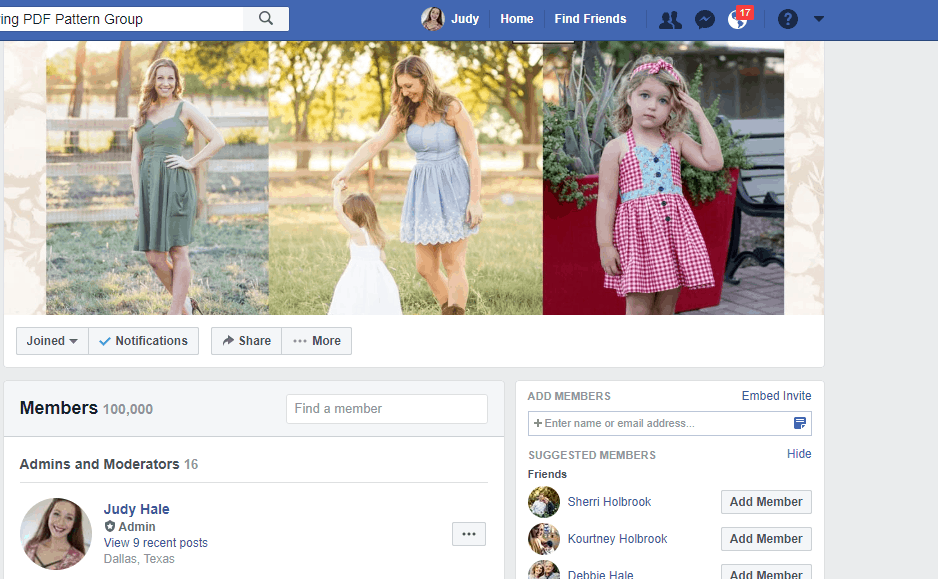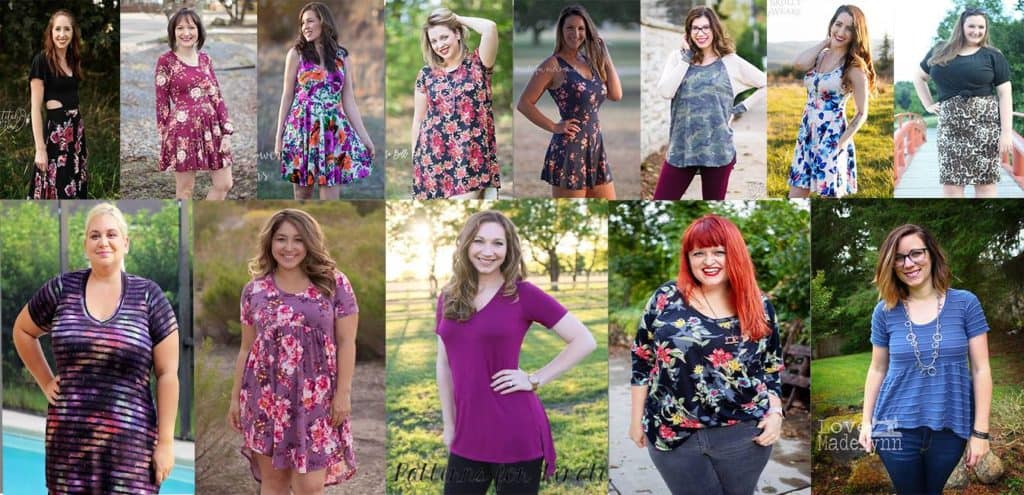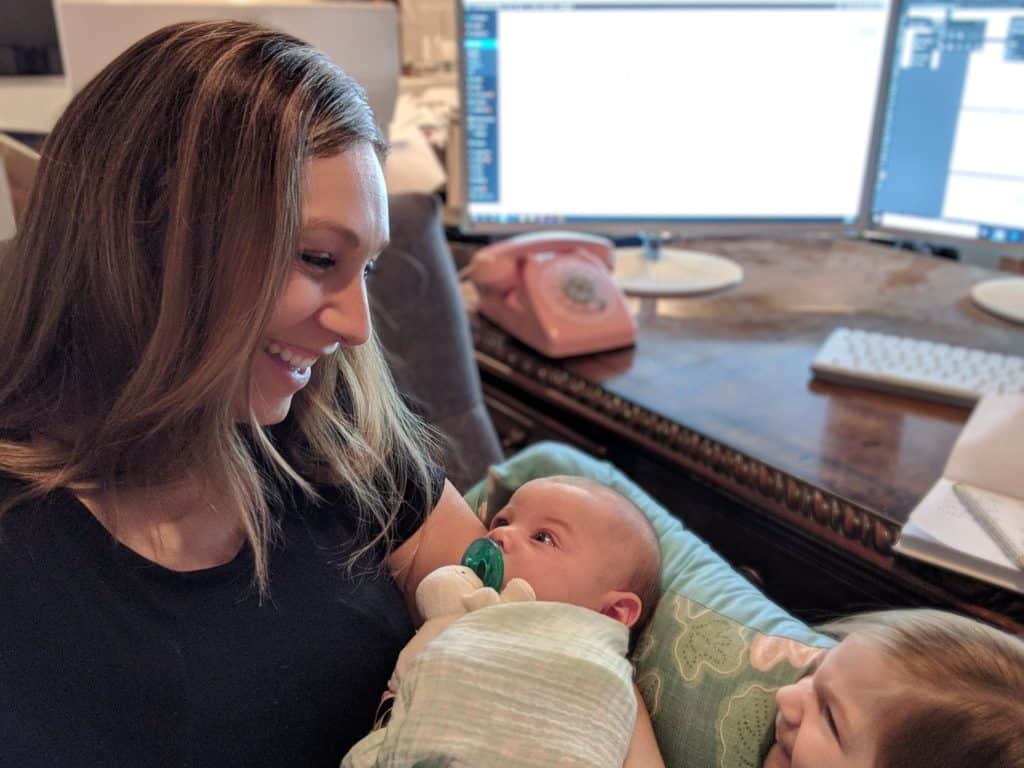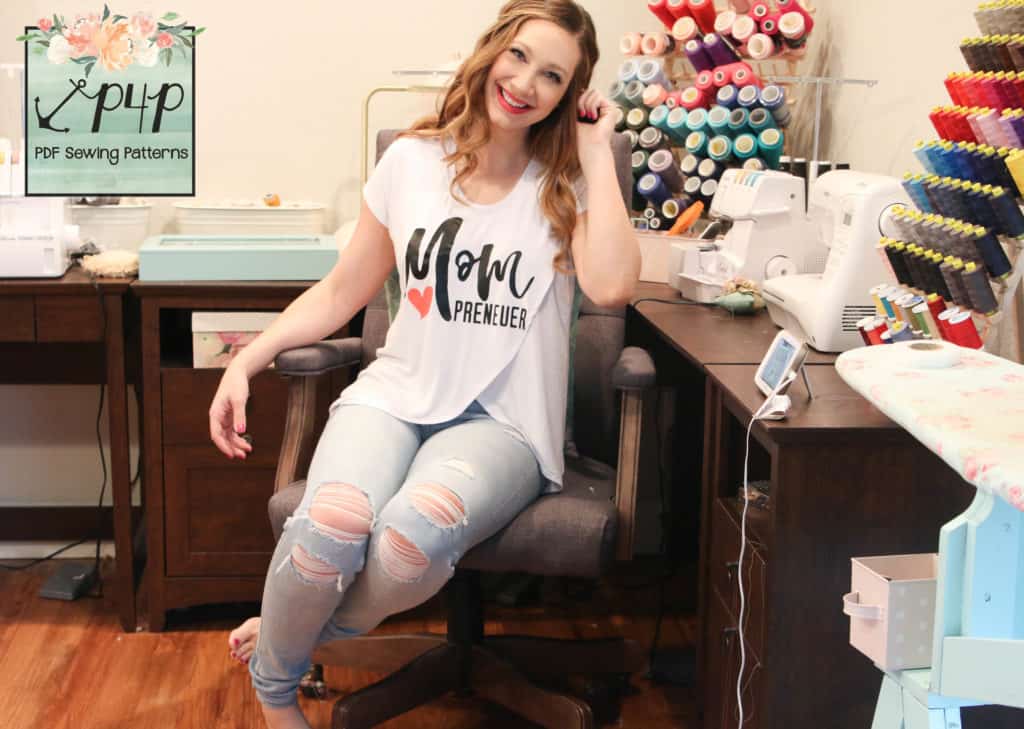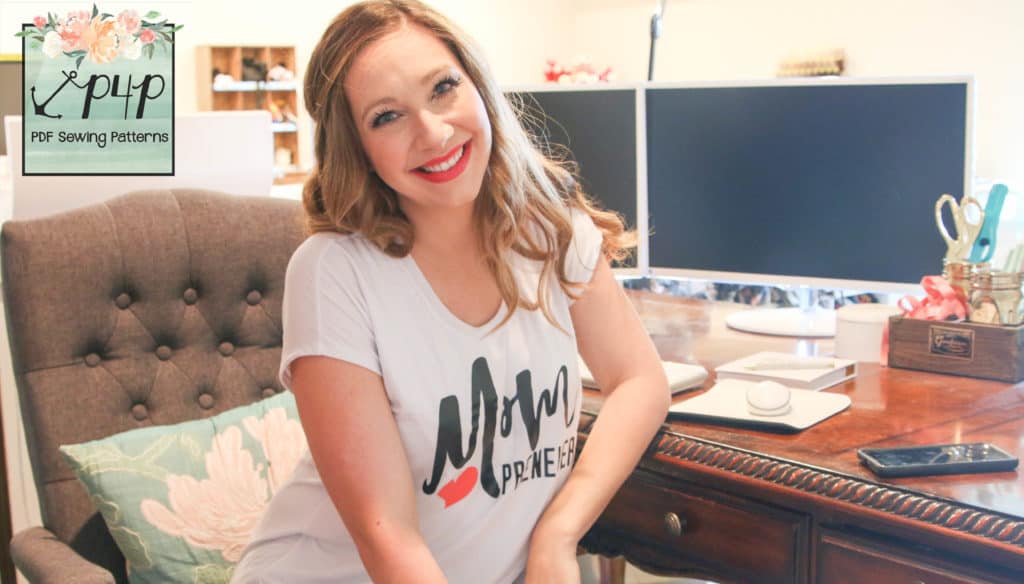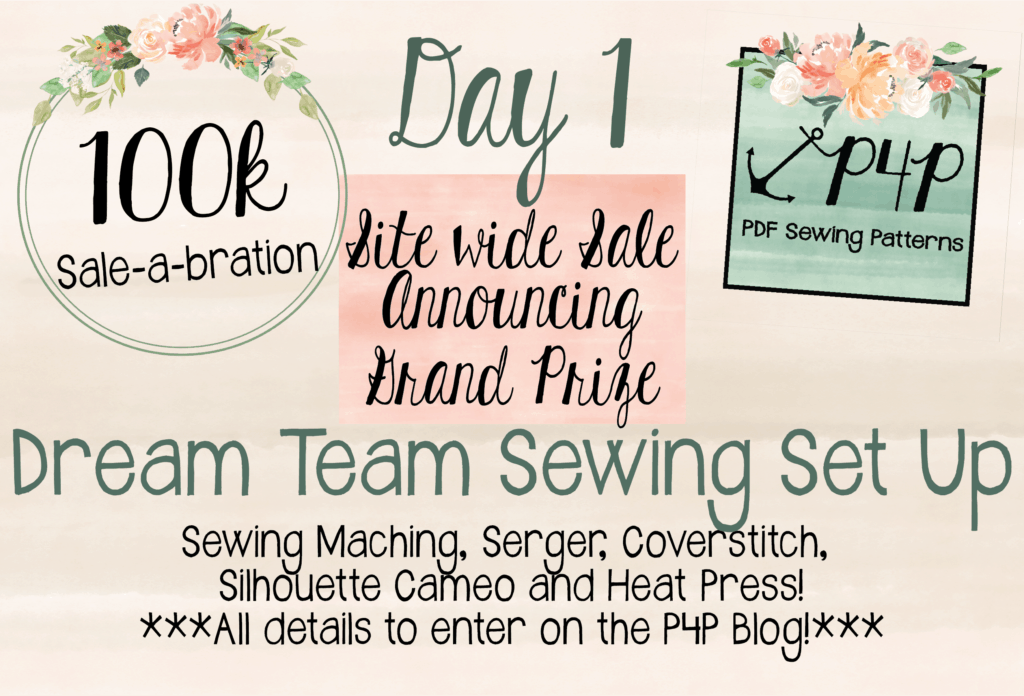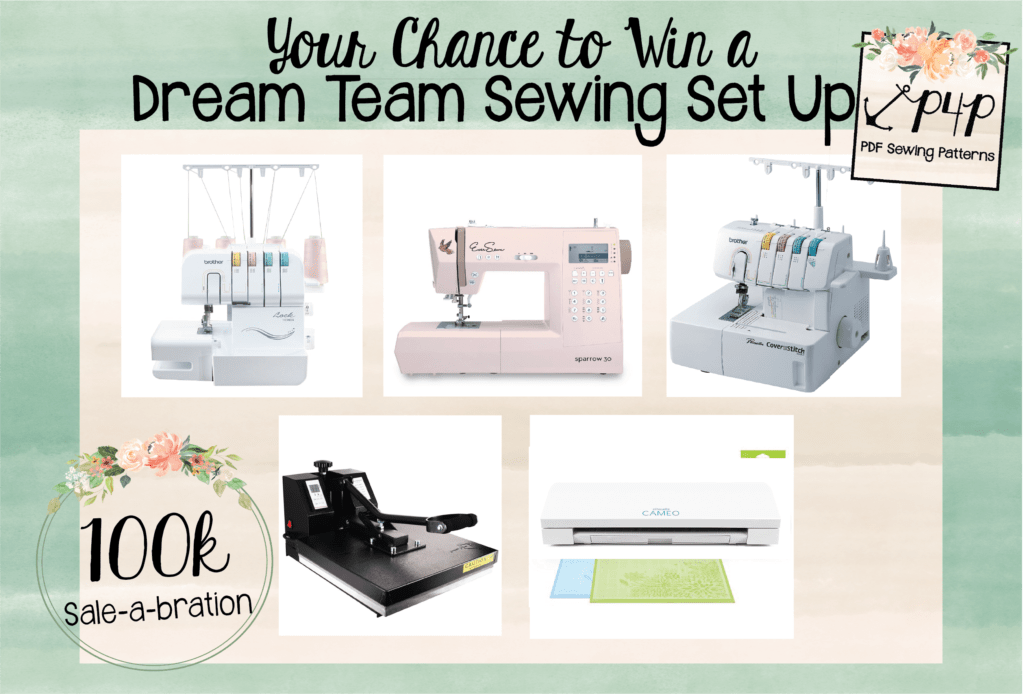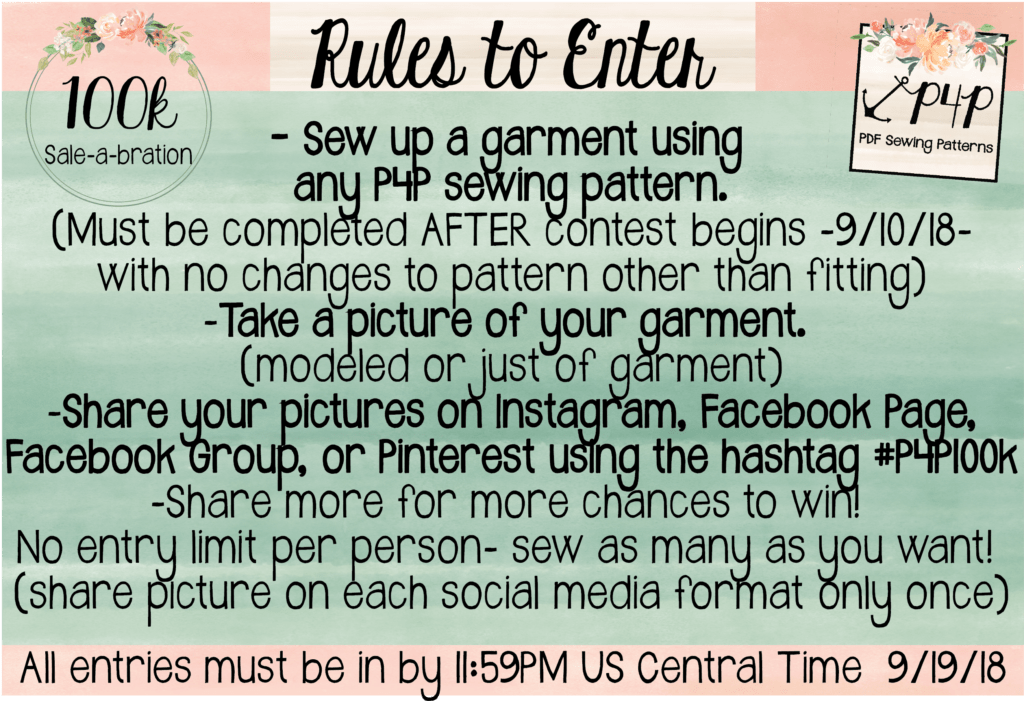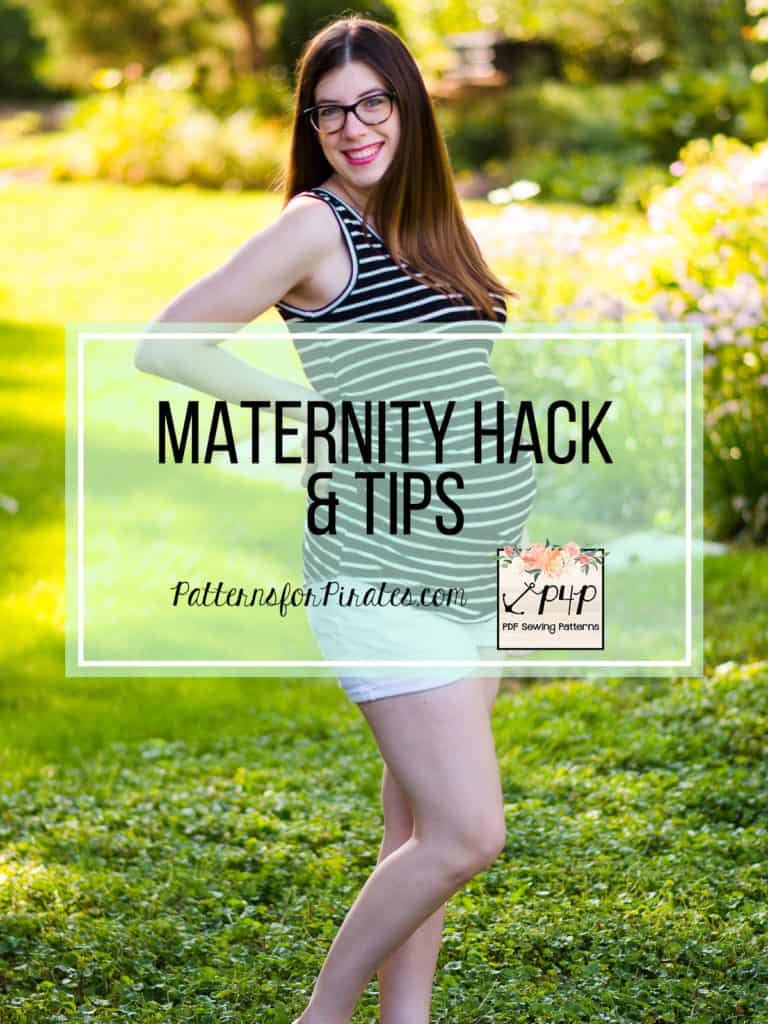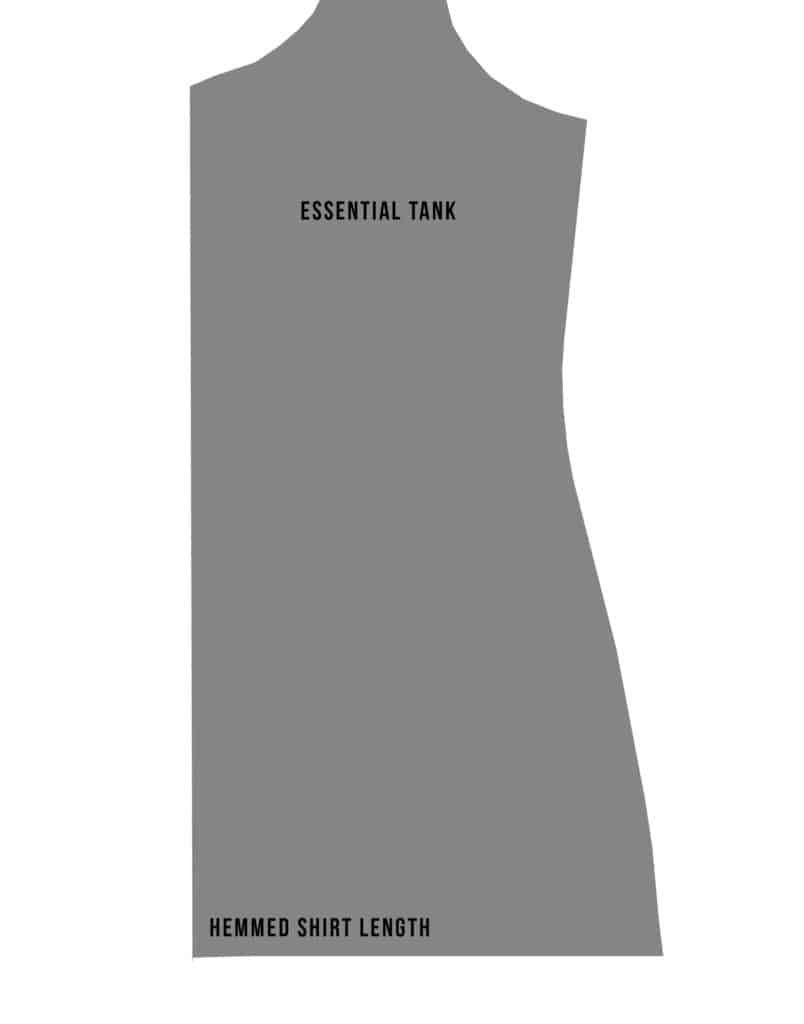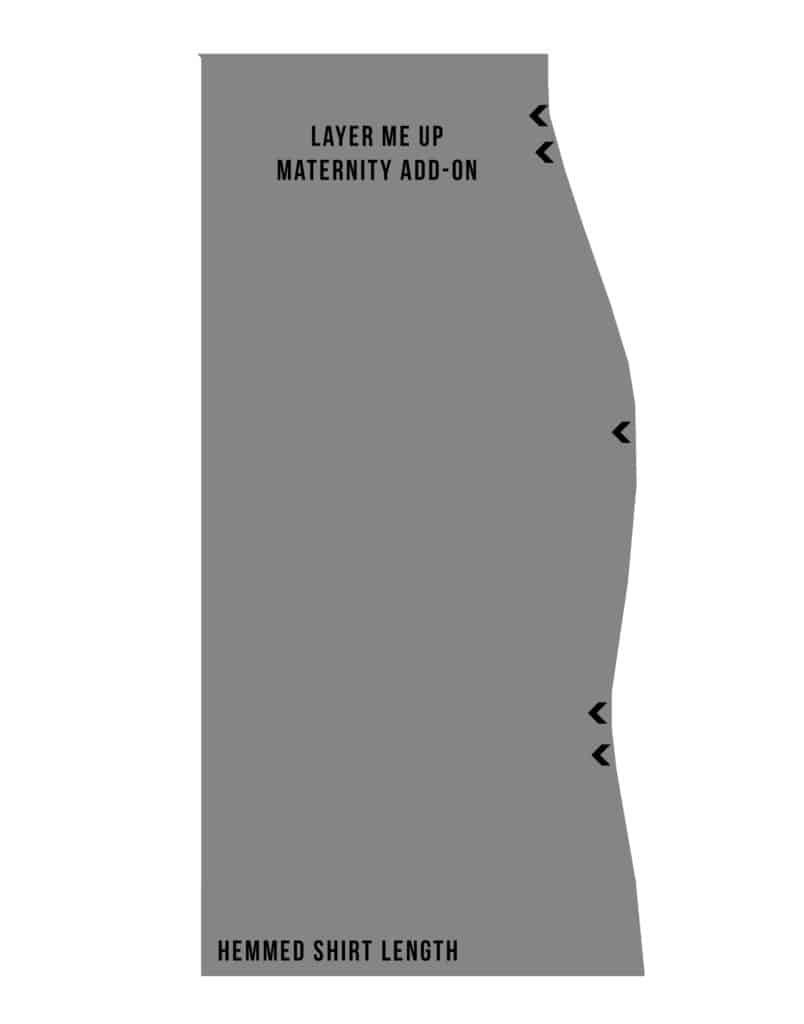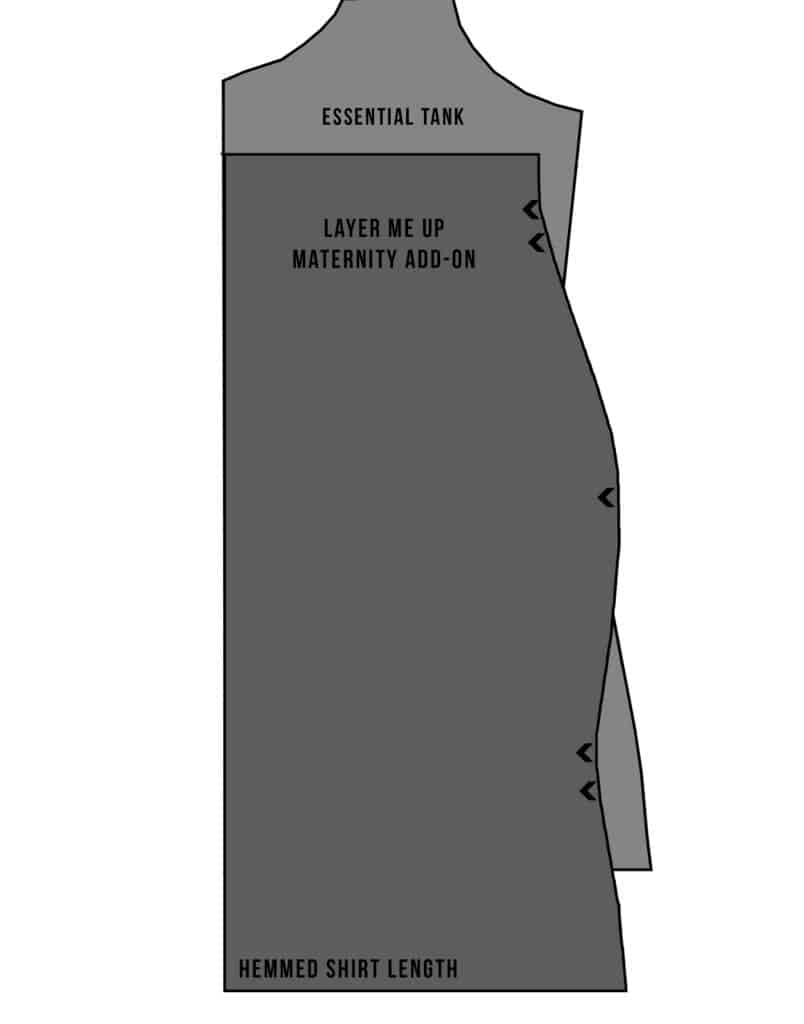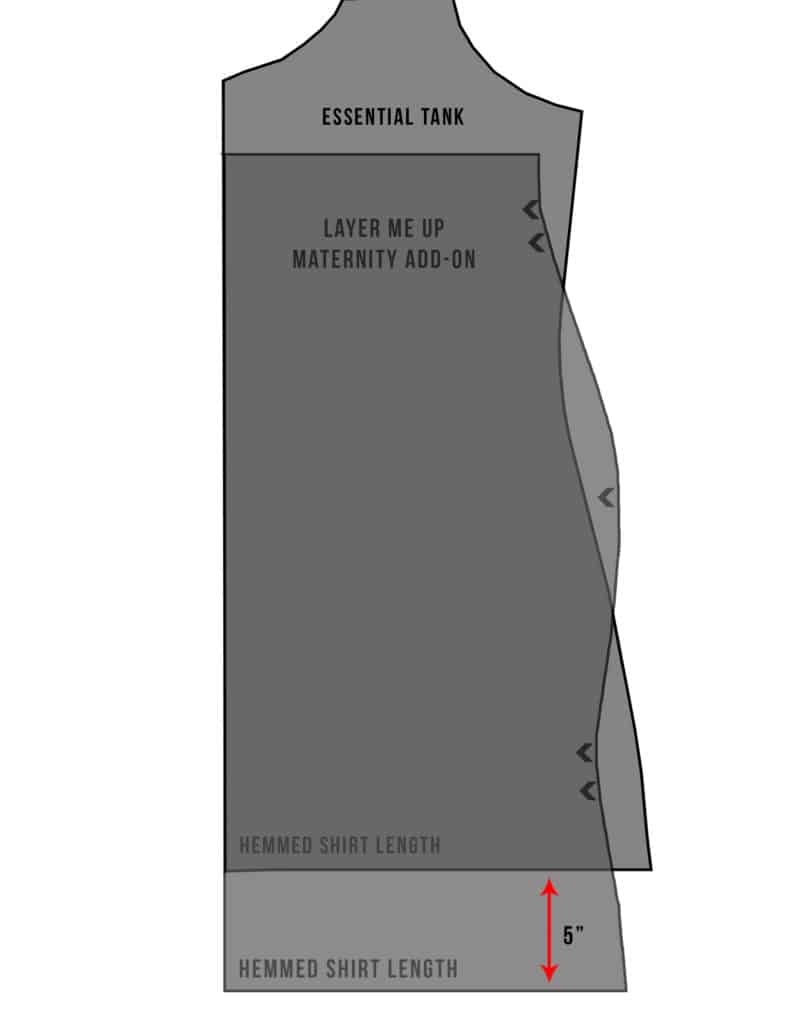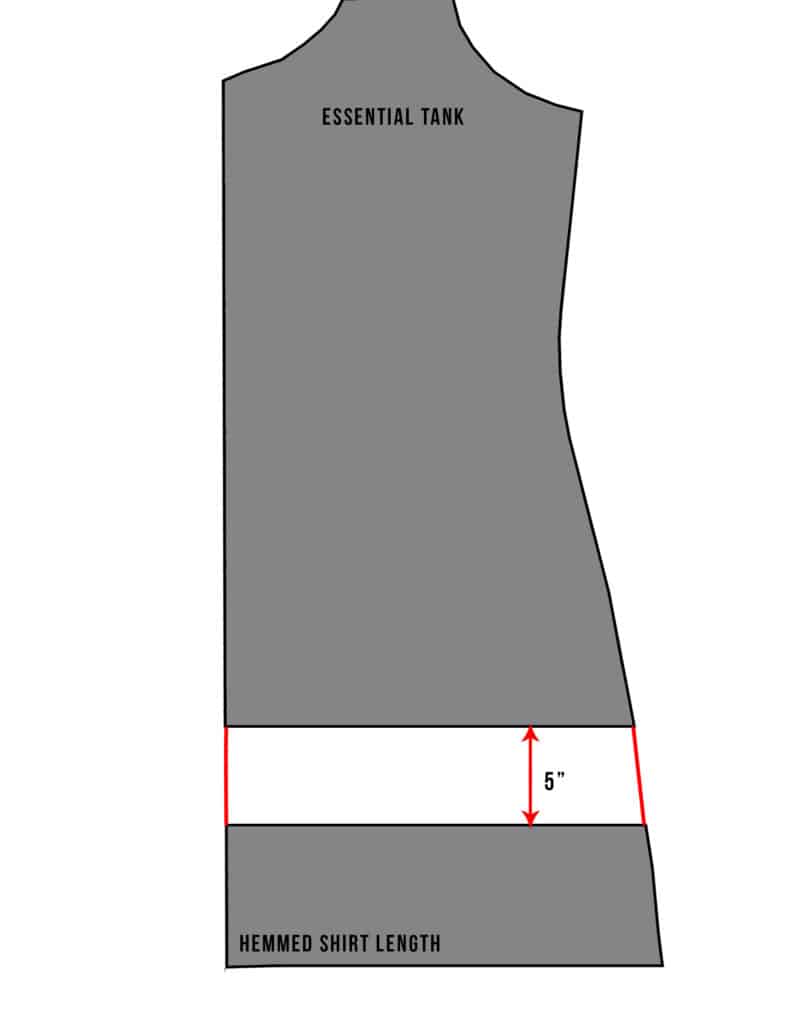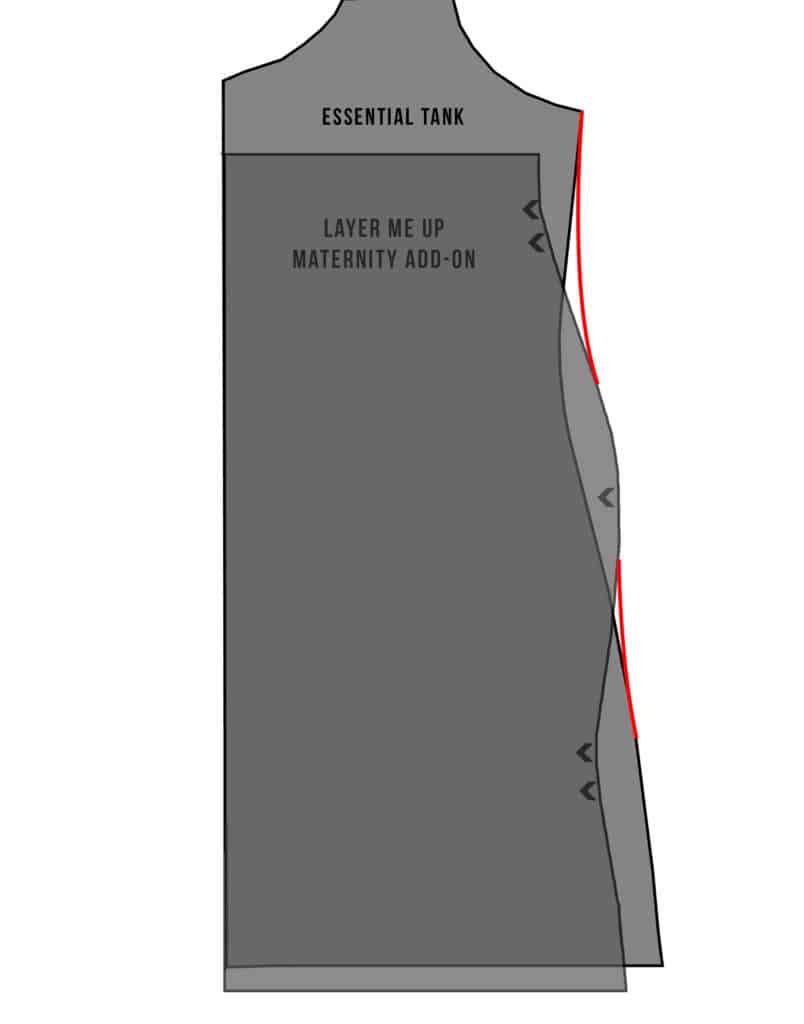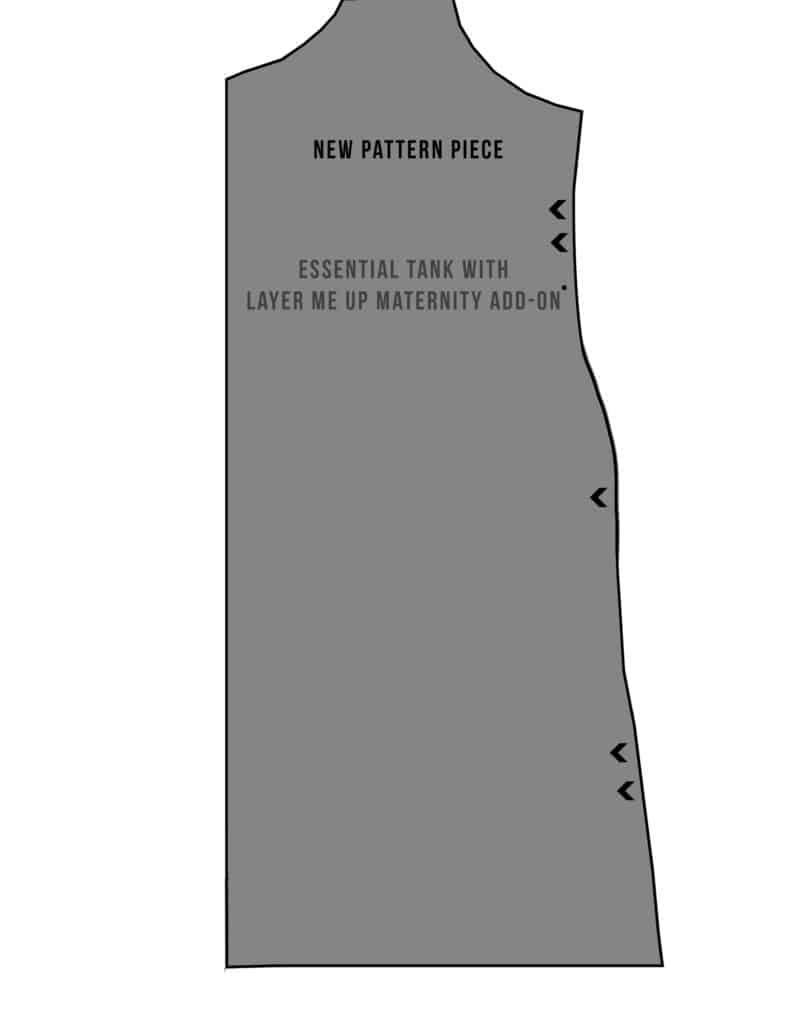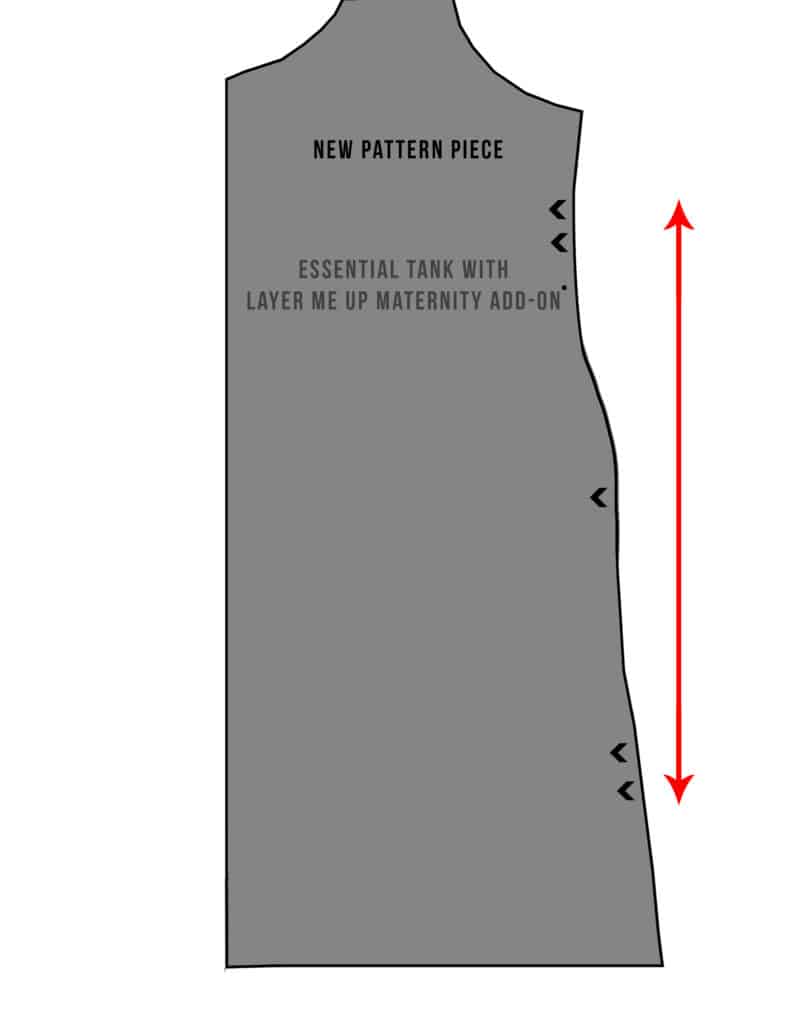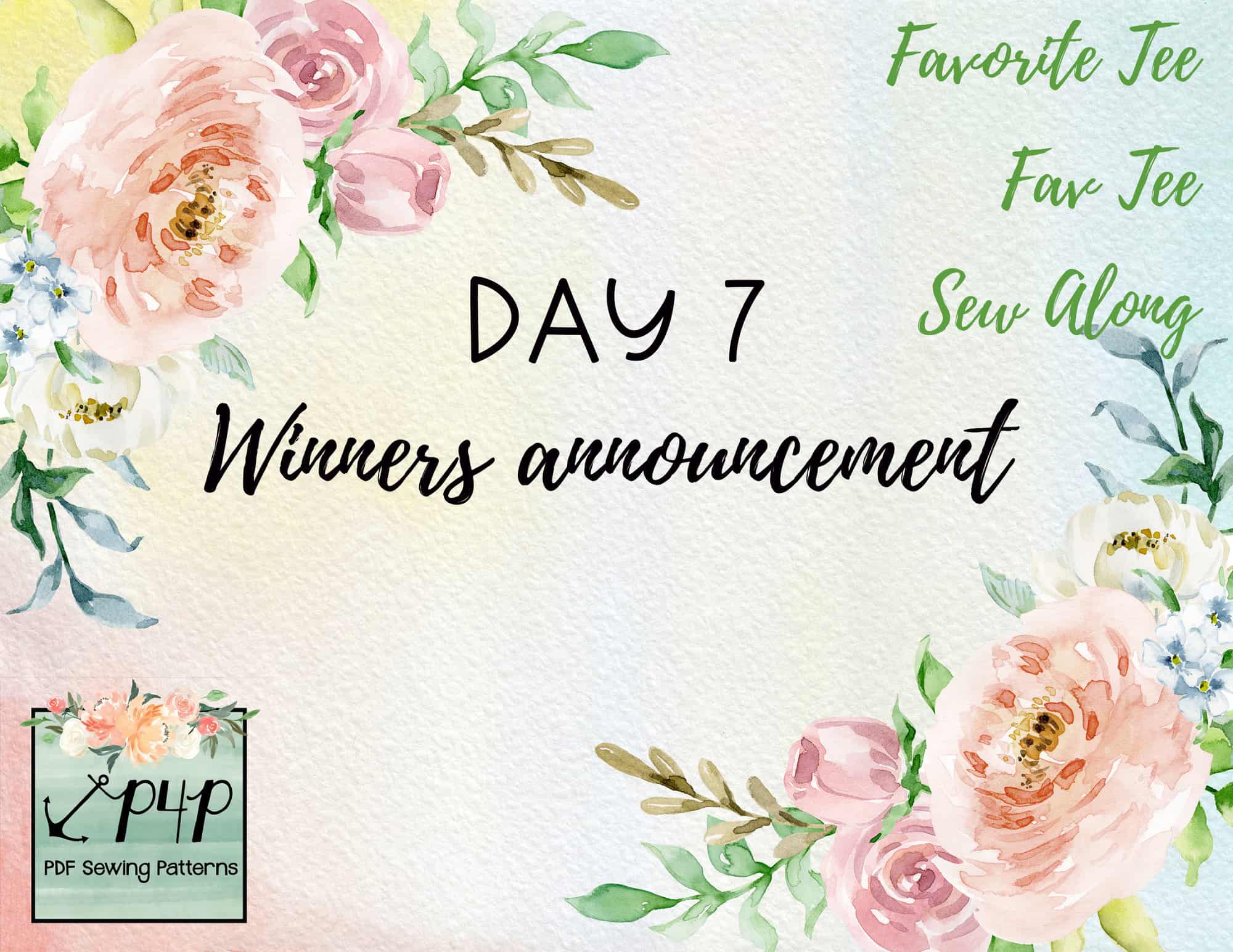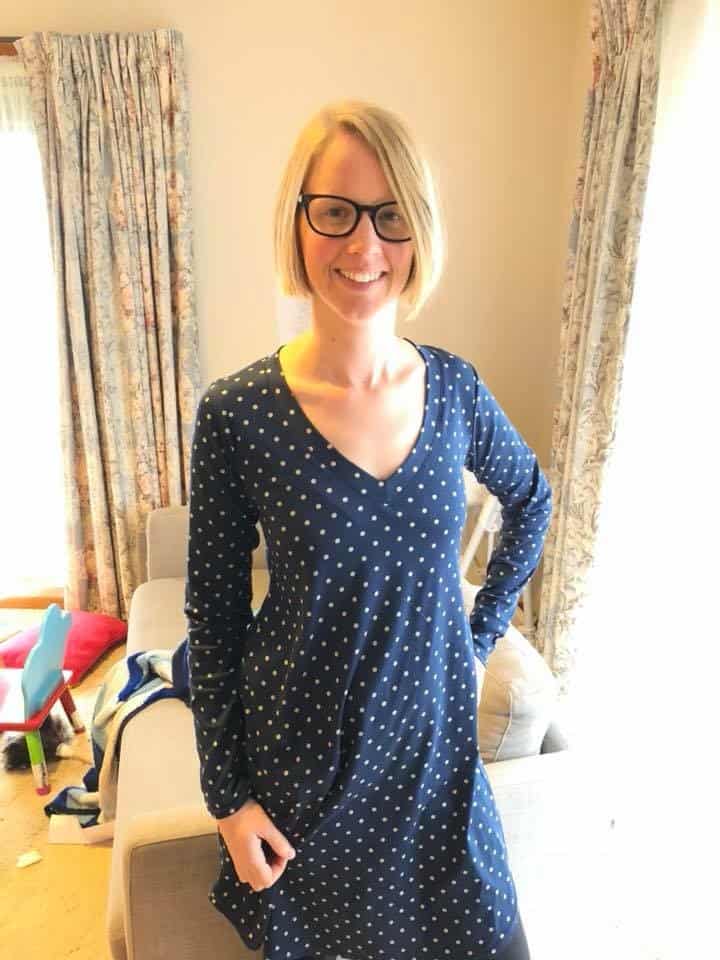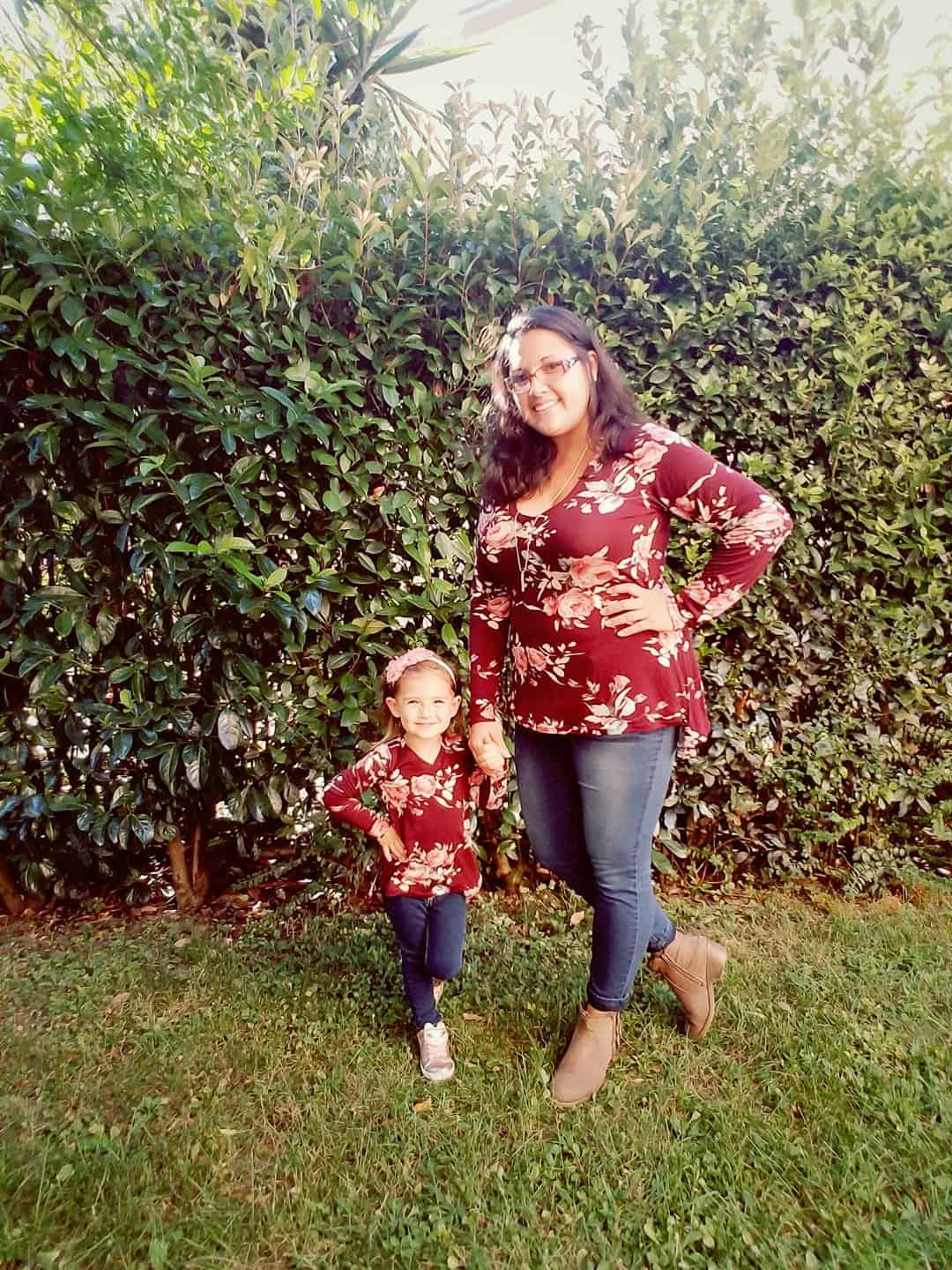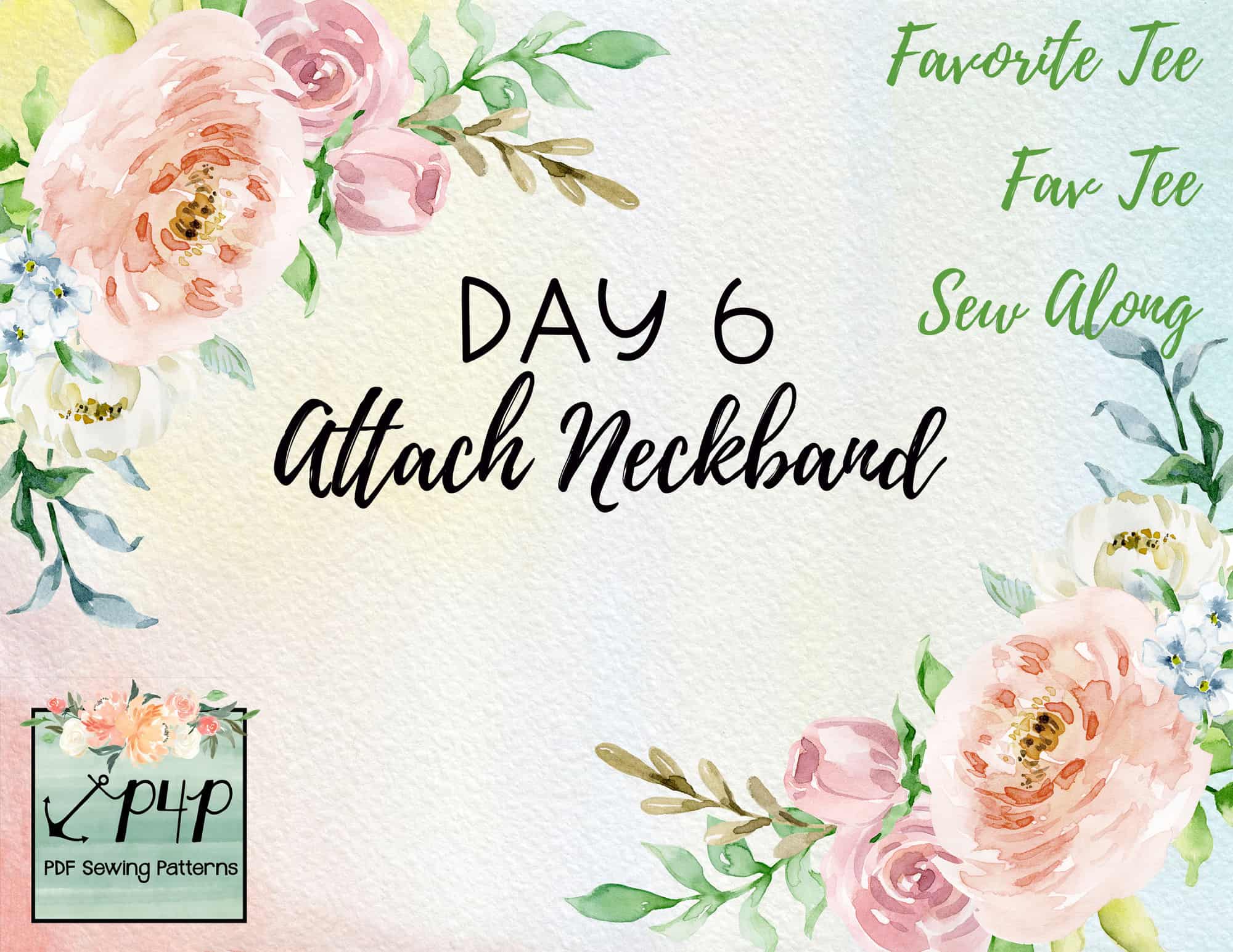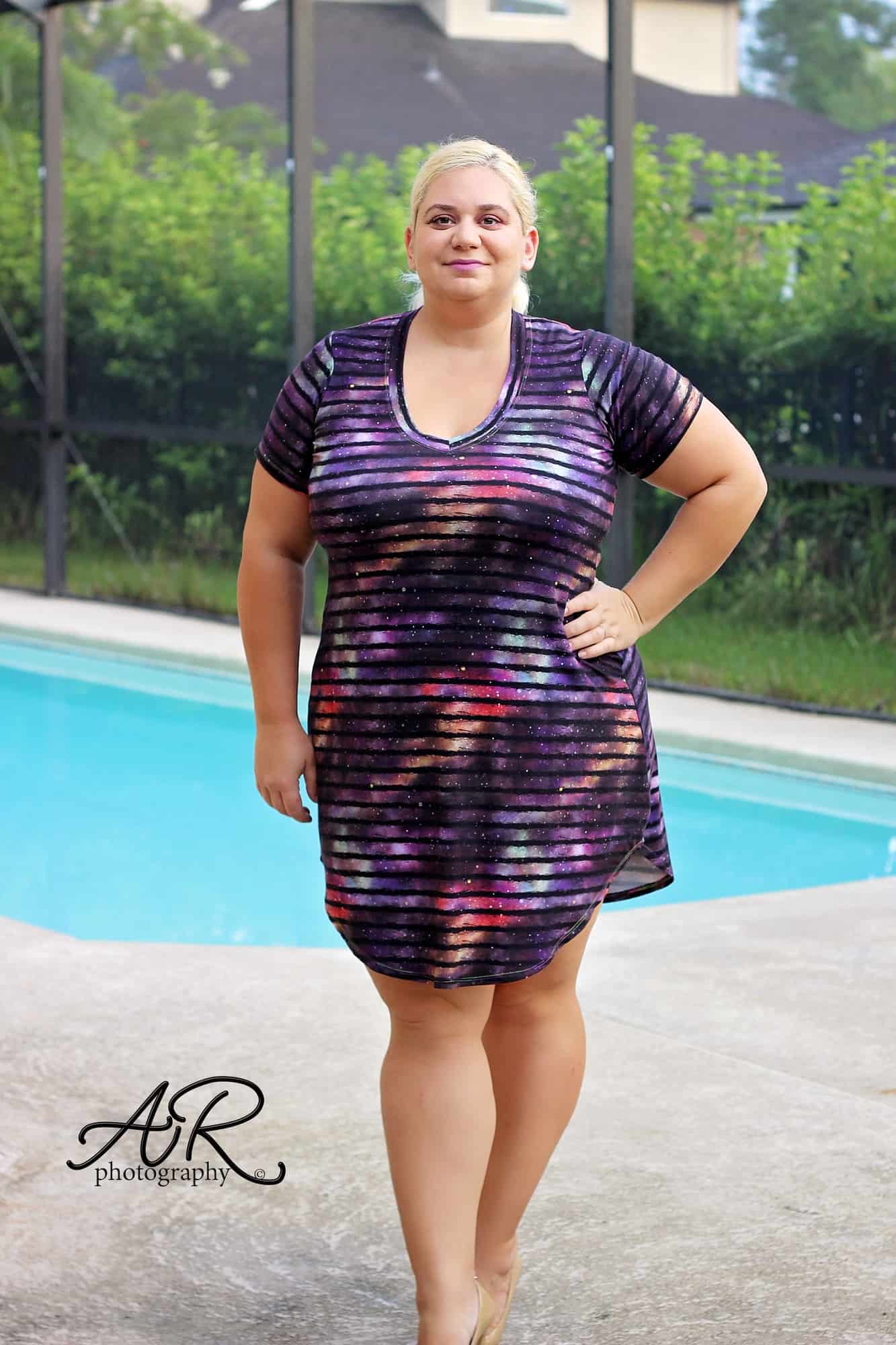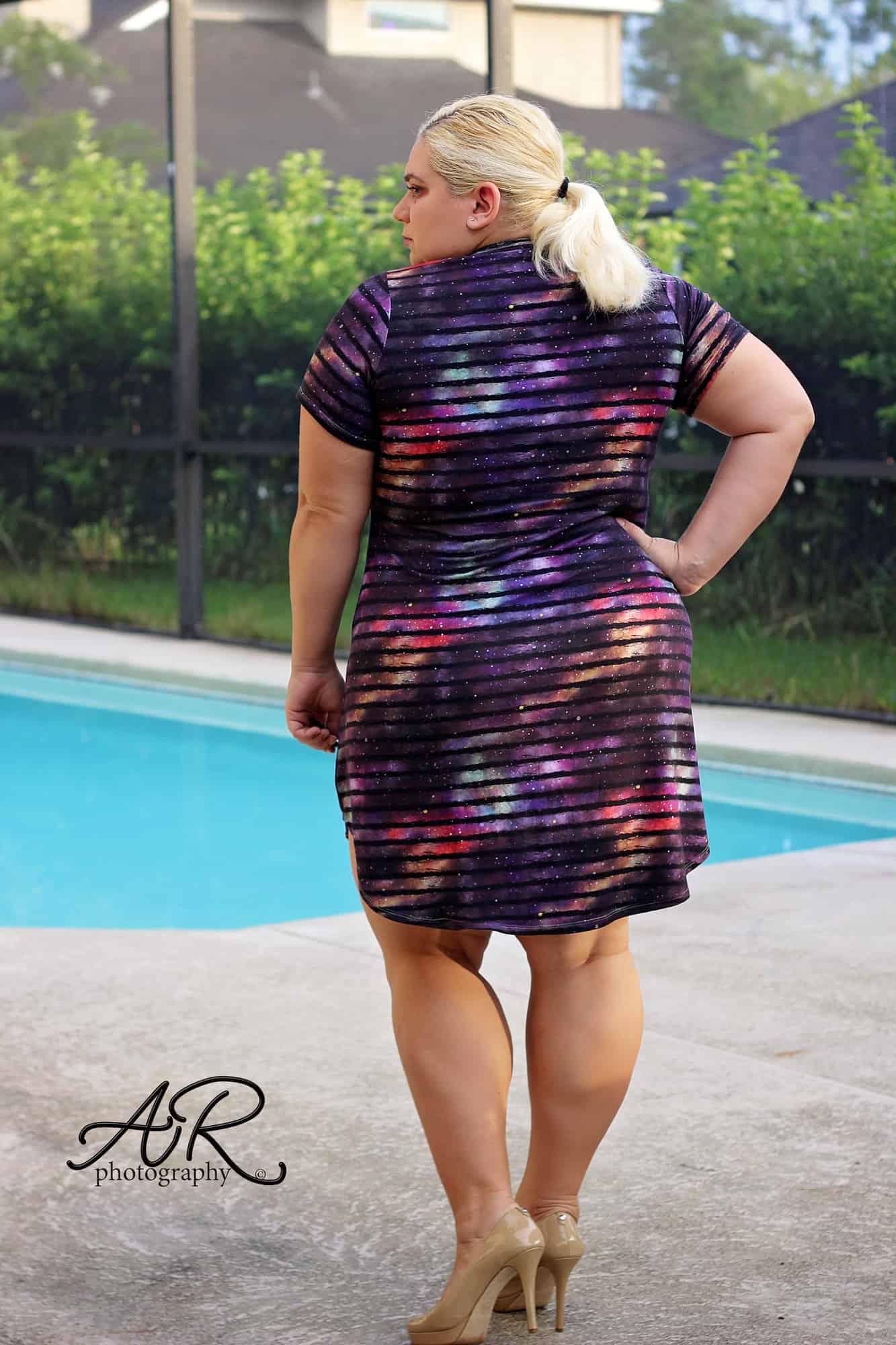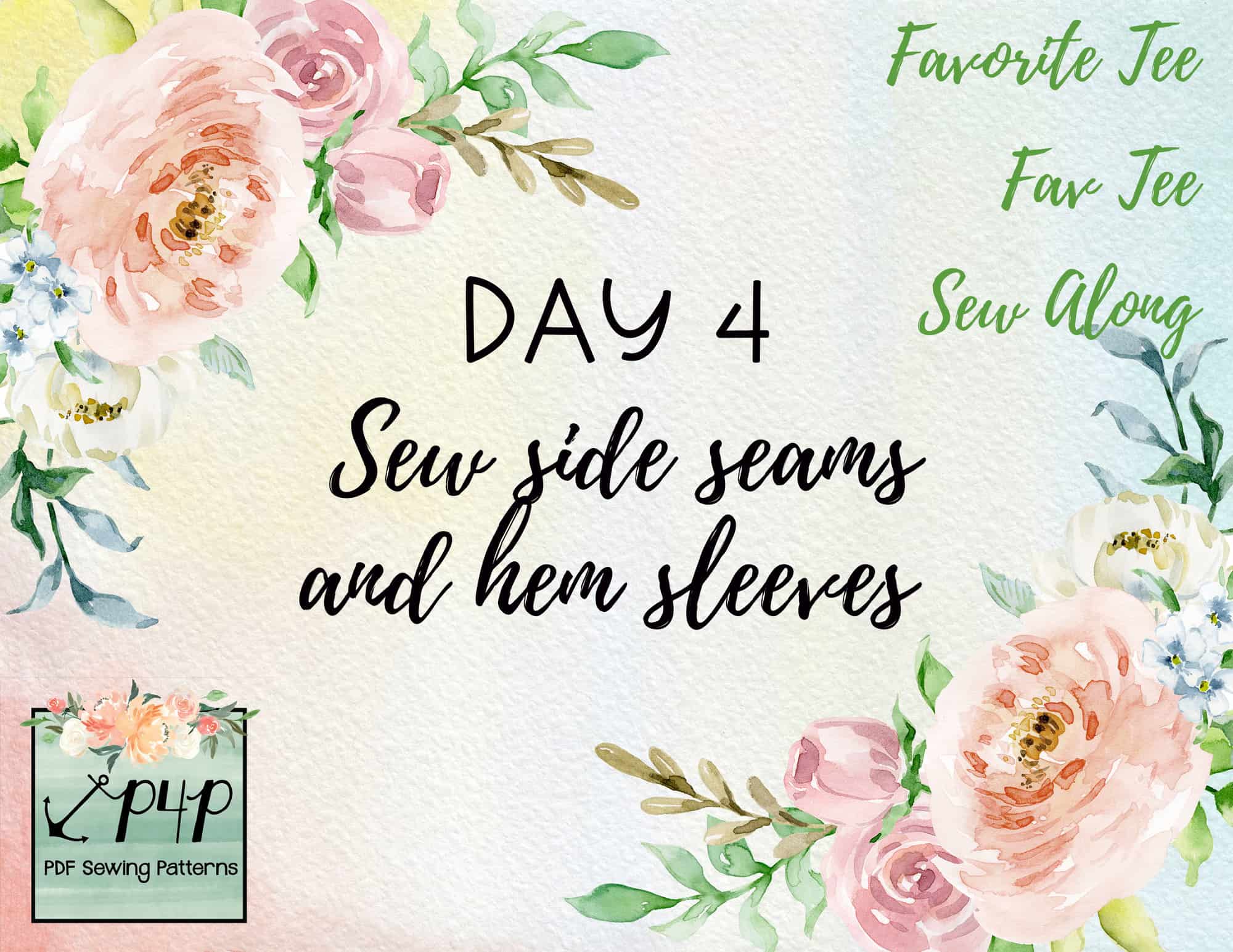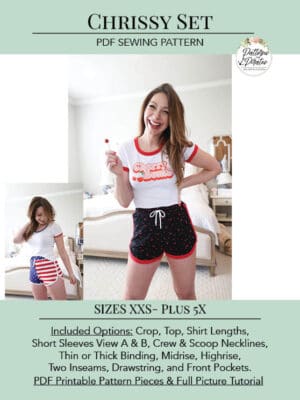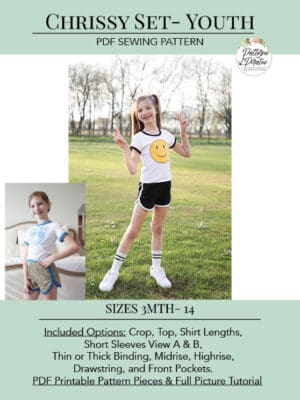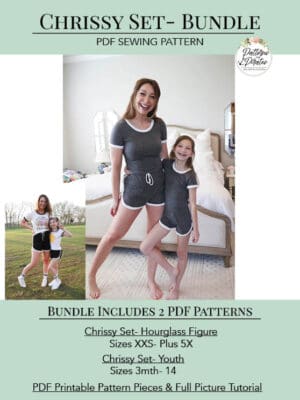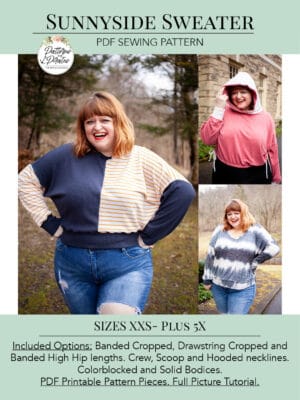Welcome back to our fourth day of the 100K Sale-A-Bration, pirates!
In case you missed the announcement or the freebies that have been released so far, here they are!
100K Sale-A-Bration + Grand Prize Giveaway | Free Convertible Cover Pattern | Free Mom/Girl Power Cut Files | Free Tiny Tulip Tee Pattern
Did you really think we’d make an adorable tee pattern for the girls and not one for women too? Obviously the ladies needed a Tulip Tee too and today’s free pattern is just that! Whoop whoop!
The Tulip Tee is a beginner knit pattern in a simple dolman style. The tulip front and back options are so fun and on trend and it can be a perfect staple for anyone’s wardrobe! It includes four bodice styles (tulip front, tulip back, tshirt hem and banded hem), 3 sleeve lengths (short, 3/4 and long), and covers womens sizes XXS – Plus 3X! This top is a looser fitting tee. The tulip options will give it a little more swing and feel looser than the plain option. A fabric with good drape is recommended, for the tulip options especially, so the curves drape down to the body rather than tenting outwards. (Favorite fabric picks would be rayon / modal / bamboo spandex blends, triblends, ITY, sweater knits, and rayon blend french terry.) The top is a shirt length that hits toward the lower part of the booty in the back, and mid rise on the front. It’s the perfect length for shorts, or to lengthen around an inch if you plan on pairing it with leggings. The tulip curves hit right at the waistband of a high-rise bottom (jeans or leggings), but is easy to lengthen to your preference!
It’s also a perfect top for nursing mommas….which is why we also included a nursing under layer that gives coverage for nursing mamas while still looking stylish and feeling comfortable.
**Want to learn more about how to measure yourself / your little one for this pattern? We’ve got you covered with an in-depth blog HERE. And in case you’re new to Patterns for Pirates and PDF patterns in general, we have a great blog full of new user tips HERE to help you get started! And, as with all of our current releases and updates, the pdfs now include our layers feature and can be found in Letter, A4 and A0 sizes.
Let’s take a quick peek at the options!
TULIP FRONT
TULIP BACK
TSHIRT HEM
BANDED HEM
NURSING UNDER LAYER
If that’s not enough, we have a Facebook album full of tester images for more inspiration! (And if you wait a couple of days, we have a post coming out that is full of pattern hacks to help take this freebie even further!)
Go grab your copy of the Women’s Tulip Tee now!
Also be sure to head over the Patterns for Pirates Facebook Group and enter yourself into today’s daily drawing for the 100K Sale-A-Bration
Happy Sewing, Pirates!

